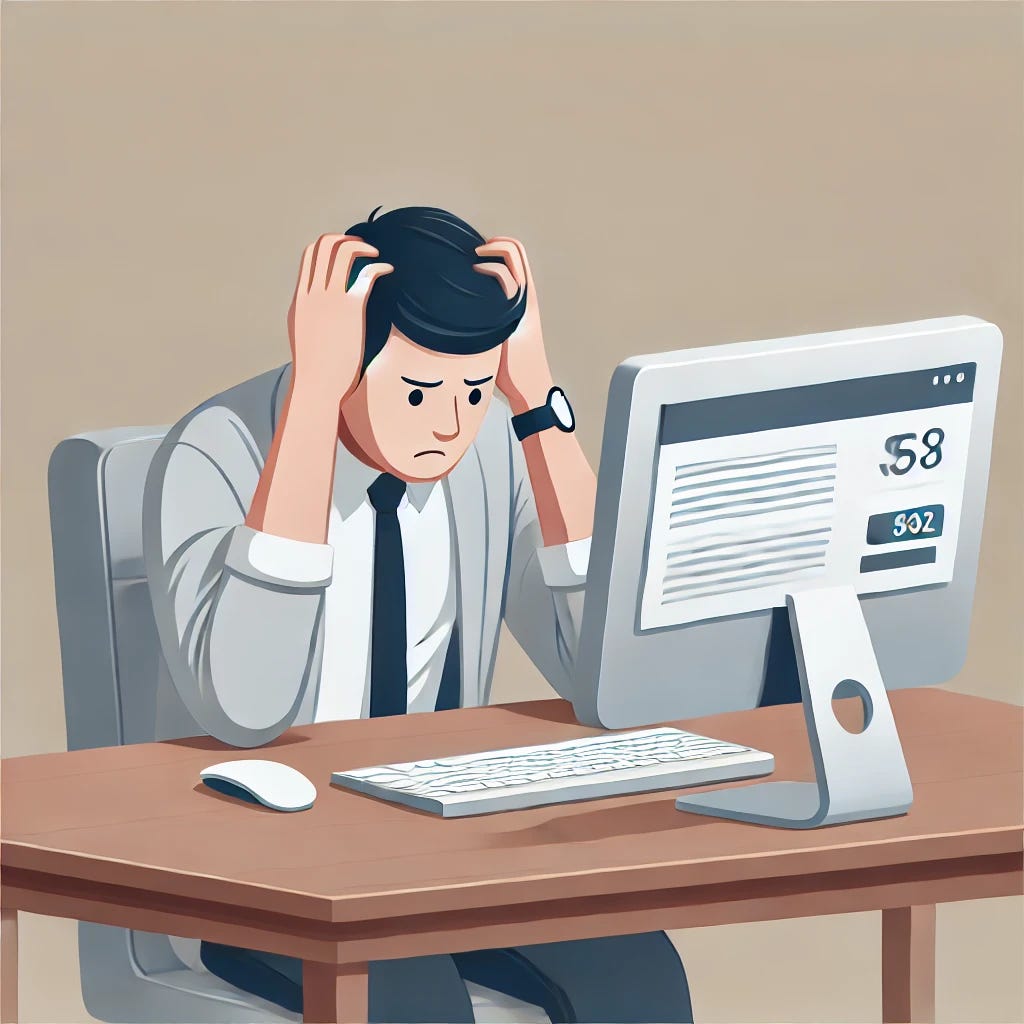How to Boost Your Landing Page Conversions
8 Creative and Practical Tactics To Double Your Conversions
10X Conversions #07
Welcome back to another edition of 10X Conversions!
Today, we’re tackling one of the most common roadblocks marketers face: low-converting landing pages.
We’ll discuss the small but powerful tweaks you can make to transform your landing page into a conversion machine without overhauling everything from scratch.
Let’s dive in and turn those underperforming pages into high-converting assets!
If you’ve ever created a landing page for your business, you know the feeling.
You’ve designed it, written the copy, and hit publish, expecting the traffic to roll in and convert like magic. But what happens when those conversions just aren’t coming?
As someone who works with coaches, consultants, and course creators, I’ve seen this a lot. You’ve done the work and driven the traffic, but the results don’t match the effort.
The good news? You don’t need to overhaul your entire page to fix it. A few small adjustments can turn things around.
Here’s what I’ve found works well with my clients—simple but effective tweaks that make a big difference.
1. Achieve Congruency: Consistency Between Ad and Landing Page
Ever click on an ad that promises something exciting, only to land on a page that feels completely unrelated? It’s confusing and the quickest way to lose a potential customer.
One of my clients—a coach running a "30-Day Business Transformation Program"—had this problem.
Their ad promised a free consultation to help clients double their productivity, but when visitors clicked through, the landing page talked about general coaching services. The messaging was all over the place, and conversions suffered.
Here’s what we did to fix it:
Match your headlines: If your ad promises a “Free Business Strategy Session,” the landing page needs to reflect that exact offer, word for word. Keep it simple and consistent.
Keep the visuals the same: The images and colors you use in the ad? Use them on the landing page, too. It makes the experience seamless and familiar.
Use the same tone: If your ad is casual and friendly, don’t hit them with formal language on the landing page. Consistency matters.
Pro Tip: Want to get personal? Use a tailored greeting on your landing page. If your ad is about productivity coaching, the page could say something like: “Welcome! Ready to double your productivity?”
When everything flows together—from ad to landing page—your visitors feel more confident they’re in the right place, and that’s half the battle won.
2. Simplify to Amplify: Don’t Overload Visitors with Info
Have you ever walked into a restaurant and been handed a menu the size of a novel? Overwhelming, right?
The same thing happens on landing pages. Too much information can paralyze people.
I worked with a consultant who had crammed everything about their service onto the landing page—testimonials, benefits, a long bio, and pricing. The page was full of good stuff, but visitors didn’t know where to look first, so they left without doing anything.
Here’s how we cleaned it up:
Lead with your main message: What’s the one thing you want people to know? Make that your headline and cut the clutter.
Keep it scannable: Use bullet points or short paragraphs. Don’t make people work to figure out what you’re offering.
Stick to one CTA: If you ask people to do too many things, they’ll do none of them. Keep the focus on one action—whether that’s signing up, downloading something, or booking a call.
Pro Tip: Give your visitors some control. Instead of dumping all the info at once, use collapsible sections. For example:
“Want to know how it works?” (click to expand)
“See what clients say about us” (click to expand)
This keeps your page clean and lets visitors decide how much info they want.
3. Craft Benefit-Driven CTAs: Make It Clear What’s in It for Them
You’ve seen it a thousand times: buttons that say things like “Submit” or “Learn More.” And let’s be honest—they’re not exactly inspiring. One client had a landing page full of these generic CTAs, and their conversion rate was stuck in the low single digits.
We made a simple change: instead of “Sign Up,” we switched to “Book Your Free Strategy Session.” Just by highlighting what the visitor would actually get, their conversion rate went up 30%.
Here’s how to make your CTAs work harder:
Tell them what they’re getting: Instead of “Download Now,” try “Download Your Free Productivity Guide.” It’s more direct and clear.
Add some urgency: Phrases like “Only 3 Spots Left—Claim Yours Now!” encourage people to act quickly.
Be specific: “Start Your Free 30-Day Coaching Trial” tells people exactly what they’re signing up for.
Pro Tip: First, ease your visitors into the CTA with small, simple actions. Ask a quick question: “What’s your biggest business challenge?” Then follow up with a more tailored CTA: “Get Your Custom Plan for [Their Challenge].”
People like feeling they’re getting something specific to their needs, and a well-worded CTA can make all the difference.
4. Tailor the Page to Visitor Intent
I often see one landing page trying to speak to all visitors, regardless of where they are in their buying journey. It’s like throwing a wide net and hoping to catch the right fish.
I had a client running ads and sending email campaigns, but all the traffic went to the same page. The result? Mixed conversions. Some visitors were ready to buy, while others were just browsing. They needed different messages, but the page wasn’t catering to that.
Here’s what we did:
Cold traffic needs education: If someone is new to your service, you must build trust first. Offer them more information and proof points, such as testimonials or case studies.
Warm traffic needs proof: Visitors who know a little about you might just need that final nudge. Show them the results your clients have achieved.
Hot traffic needs action: These people are ready to buy. Make your offer front and center with a clear CTA.
Pro Tip: Ask visitors where they are in their journey. Create buttons at the top of the page like:
“I’m just learning.”
“I’m comparing options.”
“I’m ready to get started.”
This way, visitors can self-identify, and you can guide them to the most relevant content based on their intent.
5. Build Trust Quickly with Social Proof
People are much more likely to trust you if they see that others have succeeded with your service or product.
One client I worked with was all about showcasing their own credentials and expertise on their landing page, but conversions were flat. The problem? Their potential clients didn’t care as much about their expertise—they wanted proof that others had succeeded.
We shifted the focus to testimonials, success stories, and real results. And things started clicking.
Here’s how you can build trust quickly:
Show real testimonials: Skip the vague “Great service!” reviews and show specifics, like “This coaching program helped me increase my revenue by 40% in three months.”
Use numbers: “Join 5,000+ successful clients” or “See how 1,000 people transformed their businesses” adds credibility.
Logos work, too: If you’ve worked with recognizable brands, show their logos. It’s subtle but effective social proof.
Pro Tip: Turn your testimonials into short case studies. For example, “Rahul was struggling with XYZ when he started coaching with us. Three months later, he increased his revenue by 40%.” These stories give visitors a clearer picture of what success looks like.
6. Use Micro-Commitments to Lower the Resistance to Action
One of the quickest ways to lose potential clients is to ask too much too soon.
I worked with a client who asked visitors to book a call right away, and the bounce rate was through the roof.
Here’s the fix: instead of pushing for a big commitment upfront, we used micro-commitments—small actions that were easier for visitors.
We started with a free training video. Once visitors engaged with that, we followed up with a call-to-action, asking them to book a call. And just like that, bounce rates dropped, and conversions improved.
Here’s how you can lower the barrier to entry:
Start with simple questions: Ask something easy, like “Want to improve your business?” or “Struggling with time management?” A small “yes” is an easy first step.
Keep the form short: If all you need is their email, don’t ask for more. The less they have to fill out, the better.
Offer something valuable for free: Whether it’s a checklist, guide, or template, give them something before asking for anything in return.
Pro Tip: Use a “yes ladder.” Start with questions they’re likely to agree with, like “Running a business can be tough, right?” Then, gradually lead them to a bigger ask.
7. Optimize for Mobile Visitors
More than half of web traffic is from mobile. If your landing page isn’t mobile-friendly, you’re losing out.
One of my clients had a beautiful desktop landing page, but it was clunky on mobile. Once we optimized it, their overall conversion rates shot up.
Here’s how to make your page mobile-friendly:
Think about thumbs: Place your CTA where it’s easy to tap with a thumb—usually near the center or bottom of the screen.
Keep it simple: On mobile, less is more. Remove unnecessary content and ensure that everything is easy to read and interact with.
Use larger fonts: Small text doesn’t work well on mobile. Make sure your fonts are large enough to read without squinting.
Pro Tip: Use collapsible sections on mobile so visitors can expand the content they’re interested in without scrolling endlessly.
8. Speed Matters: Don’t Make Visitors Wait
One of the fastest ways to lose visitors is by having a slow-loading landing page. A client saw a massive drop-off in visitors because their page took too long to load, especially on mobile.
Here’s how we fixed it:
Compress images: Big, high-resolution images are nice but can slow things down. Use tools like TinyPNG to compress them without losing quality.
Minimize what you don’t need: Every extra element on your page—like scripts, images, or plugins—increases the load time. Cut what isn’t absolutely necessary.
Use caching: This helps your page load faster for returning visitors.
Pro Tip: Instead of a boring loading screen, why not use a light, fun animation? It’s a small touch but can keep visitors engaged while the page loads.
Conclusion: Small Tweaks, Big Results
If your landing page isn't converting, you don’t need to reinvent the wheel. Start small. Pick one or two of the tweaks above and see how they work. Test, adjust, and keep improving. You’ll be surprised how much of a difference these small changes can make.
That said, I know making these changes on your own can sometimes feel overwhelming, especially if you’re juggling a lot in your business. If you ever feel like you could use a second pair of eyes or a bit of expert guidance, I’m here to help. I’ve worked with coaches, consultants, and course creators and optimized their landing pages and copy, leading to better results.
Feel free to reach out if you’d like me to review your landing page or help with your copy. Whether you’re looking for a quick audit or a more in-depth revamp, I’m happy to discuss how we can get your landing page converting at its best.
Three Ways You Can Help This Newsletter Grow
Share Your Ideas: Do you have a topic you'd love to see in the next edition? I’m always looking for fresh ideas. Comment your suggestions, and let’s make this newsletter even more valuable together.
Spread the Word: Do you know someone who would appreciate this content? Share it with your friends.
Engage: If you enjoyed this edition, don’t forget to like, comment, and restack it!
Your tiny action will help this newsletter spread and reach more people.





